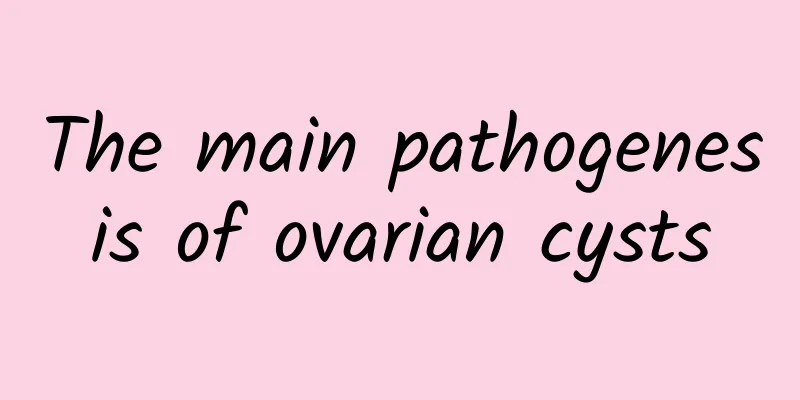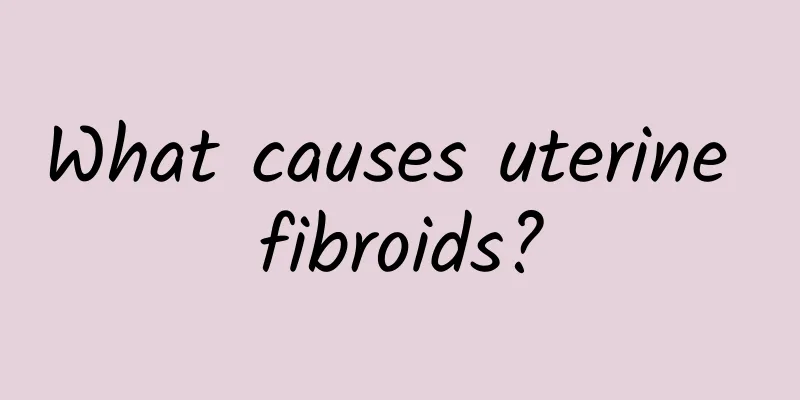The main pathogenesis of ovarian cysts

|
The pathogenesis of ovarian cysts has always been a controversial issue, and the following three theories are unanimously supported by the medical community. 1. Endometrial implantation theory For example, endometrial fragments shed during menstruation can flow back through the fallopian tubes into the abdominal cavity with menstrual blood and implant in the ovaries and adjacent pelvic peritoneum. These fragments will continue to grow and spread, eventually causing ovarian cysts. This pathogenesis is more common in women with genital tract deformities or obstructions. 2. Coelomic metaplasia theory The female reproductive system epithelium, ovarian reproductive epithelium, pelvic peritoneum, pleura, etc. all originate from the body cavity epithelium. If the body cavity epithelium is adversely stimulated by factors such as inflammation, trauma, menstrual blood or excessive estrogen, it will metaplasia into endometrial-like tissue and form ovarian cysts. 3. Immunology When a woman's immune function is normal, the endometrial cells that flow into the abdominal cavity from the fallopian tubes during menstruation will be killed by the local immune system, which generally does not cause damage to the body. However, if the local immune function is insufficient or the number of endometrial cells that flow back into the abdominal cavity is too large, endometrial cells will remain and the immune system will not be able to kill them all, which will then induce ovarian cysts. In addition, according to statistics, if a woman suffers from other immune system diseases, such as lupus erythematosus, her chance of developing ovarian cysts is 2 times higher than that of a woman with a normal immune system. |
<<: What is the relationship between true and false cervical erosion
>>: Diagnosis of irregular menstruation requires understanding whether the menstrual cycle is normal
Recommend
Understand the benefits of conservative treatment of ectopic pregnancy
Conservative treatment of ectopic pregnancy mainl...
Brief analysis of clinical symptoms of candidal vaginitis
Many female friends may have heard of candidal va...
Why does pelvic inflammatory disease affect fertility?
What are the hazards of pelvic inflammatory disea...
What are the early signs of ovarian cysts?
Ovarian cysts are a very common phenomenon. Most ...
Can external hemorrhoids cause abnormal vaginal discharge?
External hemorrhoids usually do not directly caus...
What are the symptoms of female uterine fibroids? Will female uterine fibroids cause infertility?
When it comes to female uterine diseases, uterine...
Pelvic ball stress relief exercise will make your body never feel pain again
The first method improves [body aches and pains, ...
Precautions after ovarian chocolate cyst surgery
Precautions after ovarian chocolate cyst surgery:...
Do you know what symptoms will appear if you have vaginal candidal infection?
Do you know what symptoms will appear if you get ...
Paying attention to the precautions after abortion is the most important thing
In today's society, the most concerned thing ...
By subtraction! KIMIKO develops a devilish figure
Kimiko, who coaches many stars in dancing, is as ...
Fermented milk = sugary drink! 100 ml contains 12 grams of sugar
Sweet and sour taste good? Does lactic acid bacte...
Make good use of your beauty time! Small exercises have amazing effects
In our busy daily lives, it is extremely difficul...
Lower abdominal distension, beware of uterine fibroids
Uterine fibroids are a relatively common tumor. T...
Long-term constipation can cause adnexitis
Constipation is a common thing in life. Getting a...









